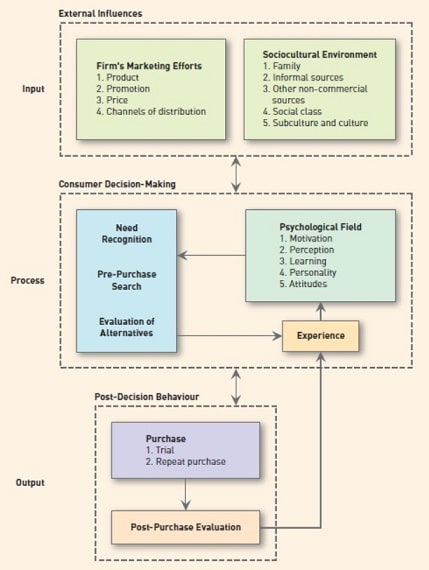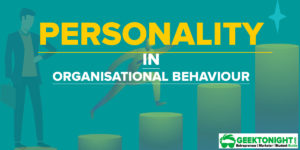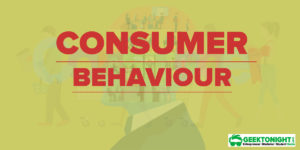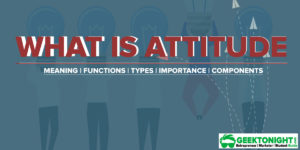Consumer Decision Making Process
Consumer decision making process and consumption process of products or services always take place in the context of some specific situation. From a marketers point of view it is extremely important to understand how situations and internal and external sources of influence affect the purchase decision process. Depending on the set of circumstances, consumers’ behaviour may take any number of directions.
Table of Content
The model takes into account some variables that affect the purchase decision.
- Psychological factors
- Sociological factor
- Lifestyles factor
- Norm factor
- Value factor
- Reference group
- Family influences
Model of Consumer Decision Making
Decision Making Inputs
The input component of consumer decision-making model draws upon external influences that serve as sources of information about a particular product and influences a consumer’s product related value and behavior.
Marketers need to know where consumer spend his/her time and select appropriate communication channel to target the consumer and deliver the related information.
Marketing inputs
The firm’s marketing activities constitute a direct attempt to reach, inform and persuade consumers to buy and use its products. This input to the consumer’s decision-making process takes the form of specific marketing-mix strategies which consist of the product itself (including its package, size and guarantees), promotion, mass media advertising, personal selling and other promotional efforts, pricing policy and the selection of distribution channels to move the product from the manufacturers to the consumers.
Socio-cultural inputs
The socio-cultural environment inputs consist of a wide range of non-commercial influences e.g. the comments of friends, an editorial in the newspaper/ paper, usage by a family member or an article on consumer reports.
The influences of social class, culture and subculture, though, less tangible are important input factors that are internalized and affect how consumers evaluate and ultimately adopt (or reject) products.
Communication inputs
These are a mechanism that delivers the marketing mix and socio culture influence to consumer. It includes word of mouth, advertising, Buzzing agents, customized messages, advice, recommendations, and social media (owned, self-generated or paid).
Consumer Decision Making Process
The process component of the model is concerned with how consumers make decision. To understand this process, the influence of the learning, personality and attitudes must be considered.
The psychological field represents the internal influences that affect the consumer’s decision-making process, (what they need or what, their awareness of various product choices, their information gathering activities, and their evaluations of alternatives)
The act of making a consumer decision consists of three stages which are:
Need recognition
The recognition of a need is likely to occur when a consumer is faced with a problem. For example, consider a customer who is looking for a motorbike. He thinks that he may be benefited by purchasing a high mileage and low maintenance bike that would incur him low running cost. This customer has recognized his need and knows the possible response.
There are two types of need recognition: actual state types and desired state type.
In former one consumer recognize need may be due to failure of existing product (touch screen of mobile is not responding promptly) or in a later case, a consumer has the desire to have a particular product and this may trigger the decision process (consumer want to purchase Apple i-phone).
Pre-purchase search
The Pre-purchase search begins when a consumer perceives a need that might be satisfied by the purchase and consumption of a product. The consumer usually searches his or her memory (the psychological field) before seeking out external sources of information regarding a given consumption related needs.
Past experience is considered an internal source of information. The greater his or her relevant past experience, the less external information the consumer is likely to need in order to reach a decision. Many consumers’ decisions are based on combinations of past experience (internal source), marketing and non commercial information (external sources).
Evaluation of alternatives
When evaluating potential alternatives, consumers tend to employ two different types of information.
- A list of brands, from which they plan to make their selection (evoked set).
- The criteria they will use to evaluate each brand. The evoked set is only a part or subset of all the brands of which the consumer is aware of making a selection from; a sample of all possible brands is a human characteristic that helps simplify the decision making process.
The criteria that consumers employ in evaluating the brands that constitute the evoked are usually expressed in terms of product attributes that are important to them.
Decision Making Output
The output portion of the model is concerned with two closely associated kinds of post decision activity. They are:
- Purchase behavior
- Post-purchase evaluation.
Purchase behavior
Consumers make two types of purchase; Trial purchase and Repeat purchase
When consumer buys any product first time , it is called as Trial. Consumers try to evaluate the new brand and future repeat purchase would depend on perception of the consumer after using the product.
Trial purchase
A consumer purchases a product for the first time, and buys a smaller quantity than usual; such a purchase would be considered a trails. Thus, trial is exploratory phase of purchasing behavior in which consumers attempt to evaluate a product through direct use.
When consumers purchase a new brand about which they may be uncertain, they tend to purchase smaller quantities than they would if it were a familiar brand. When new brand in an established product category is found by trial to be much more satisfactorily better than other brands, consumers are likely to repeat the purchase.
Repeat purchase
Behavior is closely related to the concept of brand loyalty unlike trial in which the consumer uses the product on a small scale; a repeat purchase usually signifies that the product meets with the consumer’s approval and that the consumer is willing to use it again and in large qualities. Repeat purchase represents the brand loyalty.
Post-purchase evaluation
As consumer uses a product, particularly, during a trial purchase, they evaluate its performance in the light of their own expectations. For this reason, it is difficult to separate the trial of a product from its post purchase as the two go hand in hand.
An important component of post-purchase evaluation is the reduction of uncertainty or doubt that the consumer might have about the selection. Consumers, as part of their post-purchase analysis, try to reassure themselves that their choice was a wise one i.e. they attempt to reduce post-purchase cognitive dissonance.
The degree of post-purchase analysis that consumers undertake is likely to depend on the importance of the product decision and the experience acquired in using the product. If the product lives up to expectations they will buy again.
When consumer’s expectation matches the product performance then consumer feels neutral.
- Positive disconfirmation occurs when product performance exceeds the consumer expectation and consumer is satisfied.
- Negative disconfirmation occurs when consumer expectation exceeds the product performance and consumer is dissatisfied.
Cognitive dissonance occurs when consumer holds conflicting thoughts about a belief or an attitude. When cognitive dissonance occurs after the purchase, it is called post purchase dissonance. In this, consumer tries to reassure themselves that they have taken a wise decision.
In doing so, consumer may seek advertisement that support their choice and avoid those of competing brands. Consumer may try to persuade his/her peers to buy the same product or may meet with other satisfied consumers.
Levels of Consumer Decision Making Process
The choices we make as consumers all have some kind of consequence, and some will say that when making a decision we are actually choosing between consequences, or outcomes. As such outcomes differ in their level of importance, not all consumer decision-making situations receive (or require) the same degree of information search.
As a rule of thumb, decisions can be grouped into these categories depending on the importance of the outcome, and thus the importance of not choosing the wrong alternative.
Extensive Problem Solving
When consumers have no established criteria for evaluating a product category or specifi c brands in that category or have not narrowed the number of brands they will consider to a small, manageable subset, their decision-making efforts can be classified as extensive problem-solving.
At this level, the consumer needs a great deal of information to establish a set of criteria on which to judge specifi c brands and a correspondingly large amount of information concerning each of the brands to be considered.
Extensive problem-solving usually occurs when buying products that are expensive, important and technically complicated, and implies long time commitments (e.g. a car, an apartment, a high-definition television).
Limited Problem Solving
At the limited problem-solving level, consumers have already established the basic criteria for evaluating the product category and the various brands in the category. However, they have not fully established preferences concerning a select group of brands.
Their search for additional information is more like ‘fine-tuning’; they must gather additional brand information to discriminate among the various brands. This level of problem-solving commonly occurs when purchasing an updated version of a product the consumer has bought before, such as replacing a mobile phone with a new one, buying a food processor or replacing an old laptop with a new one
Routinised Response Behaviour
At this level, consumers have experience with the product category and a well-established set of criteria with which to evaluate the brands they are considering. In some situations, they may search for a small amount of additional information; in others, they simply review what they already know.
Buying a refill of laundry detergent, toothpaste or hand soap are all examples of products consumers purchase more or less based on routine.
Marketing Management
(Click on Topic to Read)
- What Is Market Segmentation?
- What Is Marketing Mix?
- Marketing Concept
- Marketing Management Process
- What Is Marketing Environment?
- What Is Consumer Behaviour?
- Business Buyer Behaviour
- Demand Forecasting
- 7 Stages Of New Product Development
- Methods Of Pricing
- What Is Public Relations?
- What Is Marketing Management?
- What Is Sales Promotion?
- Types Of Sales Promotion
- Techniques Of Sales Promotion
- What Is Personal Selling?
- What Is Advertising?
- Market Entry Strategy
- What Is Marketing Planning?
- Segmentation Targeting And Positioning
- Brand Building Process
- Kotler Five Product Level Model
- Classification Of Products
- Types Of Logistics
- What Is Consumer Research?
- What Is DAGMAR?
- Consumer Behaviour Models
- What Is Green Marketing?
- What Is Electronic Commerce?
- Agricultural Cooperative Marketing
- What Is Marketing Control?
- What Is Marketing Communication?
- What Is Pricing?
- Models Of Communication
Sales Management
- What is Sales Management?
- Objectives of Sales Management
- Responsibilities and Skills of Sales Manager
- Theories of Personal Selling
- What is Sales Forecasting?
- Methods of Sales Forecasting
- Purpose of Sales Budgeting
- Methods of Sales Budgeting
- Types of Sales Budgeting
- Sales Budgeting Process
- What is Sales Quotas?
- What is Selling by Objectives (SBO)?
- What is Sales Organisation?
- Types of Sales Force Structure
- Recruiting and Selecting Sales Personnel
- Training and Development of Salesforce
- Compensating the Sales Force
- Time and Territory Management
- What Is Logistics?
- What Is Logistics System?
- Technologies in Logistics
- What Is Distribution Management?
- What Is Marketing Intermediaries?
- Conventional Distribution System
- Functions of Distribution Channels
- What is Channel Design?
- Types of Wholesalers and Retailers
- What is Vertical Marketing Systems?
Marketing Essentials
- What is Marketing?
- What is A BCG Matrix?
- 5 M'S Of Advertising
- What is Direct Marketing?
- Marketing Mix For Services
- What Market Intelligence System?
- What is Trade Union?
- What Is International Marketing?
- World Trade Organization (WTO)
- What is International Marketing Research?
- What is Exporting?
- What is Licensing?
- What is Franchising?
- What is Joint Venture?
- What is Turnkey Projects?
- What is Management Contracts?
- What is Foreign Direct Investment?
- Factors That Influence Entry Mode Choice In Foreign Markets
- What is Price Escalations?
- What is Transfer Pricing?
- Integrated Marketing Communication (IMC)
- What is Promotion Mix?
- Factors Affecting Promotion Mix
- Functions & Role Of Advertising
- What is Database Marketing?
- What is Advertising Budget?
- What is Advertising Agency?
- What is Market Intelligence?
- What is Industrial Marketing?
- What is Customer Value
Consumer Behaviour
- What is Consumer Behaviour?
- What Is Personality?
- What Is Perception?
- What Is Learning?
- What Is Attitude?
- What Is Motivation?
- Segmentation Targeting And Positioning
- What Is Consumer Research?
- Consumer Imagery
- Consumer Attitude Formation
- What Is Culture?
- Consumer Decision Making Process
- Consumer Behaviour Models
- Applications of Consumer Behaviour in Marketing
- Motivational Research
- Theoretical Approaches to Study of Consumer Behaviour
- Consumer Involvement
- Consumer Lifestyle
- Theories of Personality
- Outlet Selection
- Organizational Buying Behaviour
- Reference Groups
- Consumer Protection Act, 1986
- Diffusion of Innovation
- Opinion Leaders
Business Communication
- What is Business Communication?
- What is Communication?
- Types of Communication
- 7 C of Communication
- Barriers To Business Communication
- Oral Communication
- Types Of Non Verbal Communication
- What is Written Communication?
- What are Soft Skills?
- Interpersonal vs Intrapersonal communication
- Barriers to Communication
- Importance of Communication Skills
- Listening in Communication
- Causes of Miscommunication
- What is Johari Window?
- What is Presentation?
- Communication Styles
- Channels of Communication
- Hofstede’s Dimensions of Cultural Differences and Benett’s Stages of Intercultural Sensitivity
- Organisational Communication
- Horizontal Communication
- Grapevine Communication
- Downward Communication
- Verbal Communication Skills
- Upward Communication
- Flow of Communication
- What is Emotional Intelligence?
- What is Public Speaking?
- Upward vs Downward Communication
- Internal vs External Communication
- What is Group Discussion?
- What is Interview?
- What is Negotiation?
- What is Digital Communication?
- What is Letter Writing?
- Resume and Covering Letter
- What is Report Writing?
- What is Business Meeting?
- What is Public Relations?
Business Law
- What is Business Law?
- Indian Contract Act 1872
- Essential Elements of a Valid Contract
- Types of Contract
- What is Discharge of Contract?
- Performance of Contract
- Sales of Goods Act 1930
- Goods & Price: Contract of Sale
- Conditions and Warranties
- Doctrine of Caveat Emptor
- Transfer of Property
- Rights of Unpaid Seller
- Negotiable Instruments Act 1881
- Types of Negotiable Instruments
- Types of Endorsement
- What is Promissory Note?
- What is Cheque?
- What is Crossing of Cheque?
- What is Bill of Exchange?
- What is Offer?
- Limited Liability Partnership Act 2008
- Memorandum of Association
- Articles of Association
- What is Director?
- Trade Unions Act, 1926
- Industrial Disputes Act 1947
- Employee State Insurance Act 1948
- Payment of Wages Act 1936
- Payment of Bonus Act 1965
- Labour Law in India
Brand Management
Human Resources Tutorial
(Click on Topic to Read)











